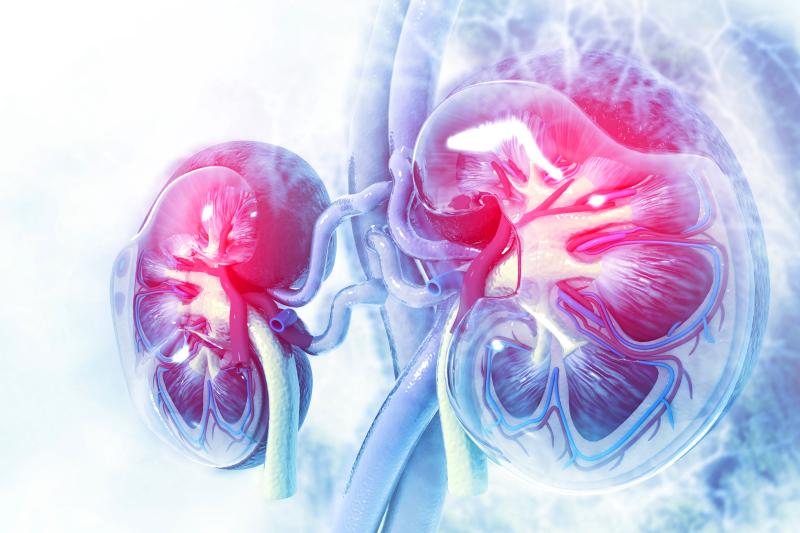
While uncommon, elevated urinary ammonium in kidney stone patients is associated with higher rates of comorbid metabolic conditions, urinary tract infections, and bowel surgery, according to a study.
The retrospective study involved 3,625 adult kidney stone disease patients (49.9 percent female) who completed 24-hour urine studies, among whom 259 (7.1 percent) showed high ammonium. Researchers selected 121 patients with elevated urinary ammonium (case) and 121 matched controls for the final analysis.
The overall cohort had an average age of 51.5 years. Mean urinary ammonium (NH24) levels were 79.1 mmol/d in the case group vs 34.7 mmol/d in the control group (p<0.01). The median time between 24-H urine and stone analysis was 100 days.
Compared with controls, patients with elevated urinary ammonium had higher urine volume, oxalate, calcium, uric acid, sodium, chloride, and sulfate. They were also more likely to have higher body mass index and a history of recurrent urinary tract infections, diabetes, gout, bowel resection, and urinary reconstruction history.
Struvite stones were more frequently identified in the case than in the control group, although the difference was not statistically significant (7 vs 1; p=0.07).
The current study is the first to describe the clinical characteristics of kidney stone formers with elevated urinary ammonium and demonstrates the clinical utility of measuring urinary ammonium, especially in identifying patients likely to be infected/colonized with urease-producing bacteria, according to the researchers. Anecdotal experience has shown that antibiotic treatment in these patients leads to short-term decreases in urinary ammonia, consistent with an infectious aetiology.